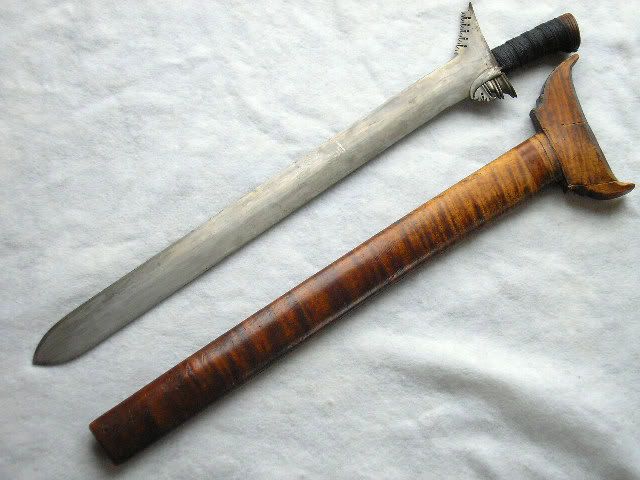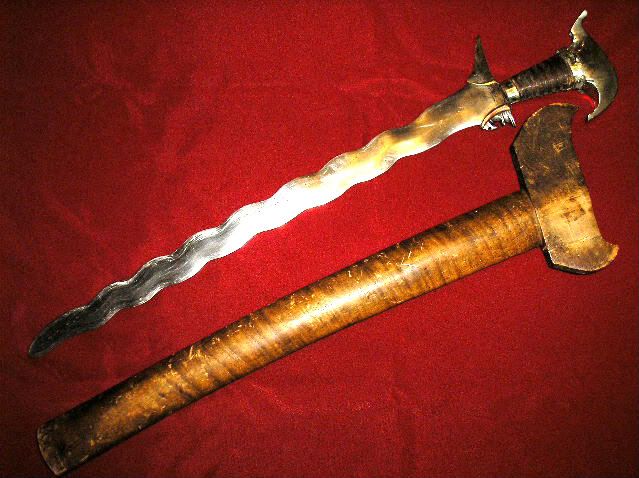Quote:
|
Originally Posted by Spunjer
really?
here's a Kris Espada dated 1899

now, here's a Kalis Seko from the early 1800's

and a museum piece i was fortunate enough to study, a Kris Luma from late 1700's/early 1800's

which is similar to one of our member's piece (VVV), and btw, with an Ivory pommel
http://www.vikingsword.com/vb/showth...haic+moro+kris
seems to be that the older pieces are more intricate than the newer one in this case. care to explain? again, you haven't answered my question on how do you know the alleged smithsonian pictures were old by your definition?
turko is spanish. spanish conquered philippines. how hard is that? |
On the issue of turko, it seems you are not getting my point. I grew up hearing turko used to scare us when we were kids so was bombay. I did not even know then how they looked like. I had not met them. We lived in a province in mindanao. Since I heard that word, I started asking where they learned about turko and bombay. They said from their ancestors. There you go. The spanish definitely did not introduce bombay for Indian and I believe turks reached mindanao, hence the turko in the consciousness of the Filipinos and in the language.
If I have to carbon-date krises these are the ones I am interested to work on in particular order.
kris 1
kris 2
kris 3
kris 4
You said dated? What did you mean by that? Carbon-dated? Any dates etched or carved? If there are, are they Islamic or Christian dating? When you said dated, is it the date they were collected, put in the museum, sold, found or what? If you want to make sure of dates, you better use a technology.
Now, in the absence of real recorded dates and scientific methods of dating, the rule in archeology regarding early tools, stone, wooden, and metal, applies-- from simple to complex. There are archaeological materials you can read online regarding the evolution of tools.
In archaeological dating, in the absence of carbon-dating and physical indication of real dates-- historical accounts and artifacts are also used in association. For example: chinese ivory trade in prespanish and during the early spanish colonization was rampant among the native of palawan and other lumad areas. Hence, you cannot see an entire kris handle made of ivory.
then in 19th century, europeans monopolized the ivory trade in the area of java, sumatra, and sulu. That's the reason too why javan elephants disappeared. I am still collecting data about sulu elephants and the role of a sulu sultan in (unknowingly) preserving extinct javan elephants that are said to be still existing in Borneo. Hence, the 19th century ivory "cockatoo" handle heads.
They are not really cockatoos but images of sarimanok (mythical bird). Ottoman art has such bird motif. I believe it was the ottomans and arab missionaries who brought the Islamic image to sulu.
There are just many things to consider. Next time you see a dated kris in a museum, ask the curator if it was the date the kris was collected or made. Most of the time, when tools are not carbon-dated, they won't put dates they were made but collected.